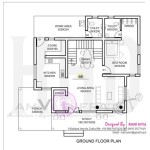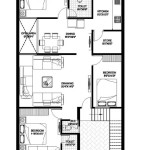Safe House Home Plans: Designing for Security and Peace of Mind
Safe house home plans prioritize security and resilience, incorporating features designed to protect occupants from various threats, ranging from burglaries to natural disasters. These plans represent a specialized area of architectural design, requiring careful consideration of construction materials, layout, and integrated security systems. While sharing some similarities with typical home designs, safe houses incorporate unique elements that set them apart.
One key aspect of safe house design is the selection of robust building materials. Reinforced concrete, steel framing, and impact-resistant windows and doors are frequently employed to create a hardened shell. These materials offer superior resistance to forced entry, ballistic impacts, and extreme weather conditions. Walls and roofs may also be reinforced with ballistic fibers or other specialized materials to further enhance protection.
The layout of a safe house plays a crucial role in its overall security. Strategic room placement, concealed entrances and exits, and designated safe rooms are common features. Safe rooms, often located in inconspicuous areas of the house, are designed to provide a secure retreat during emergencies. These rooms are typically constructed with reinforced walls, doors, and communication systems, allowing occupants to shelter in place and contact authorities.
Integrated security systems represent a critical component of safe house design. These systems can include surveillance cameras, motion detectors, alarm systems, and biometric access controls. Modern safe houses often incorporate smart home technology, allowing for remote monitoring and control of security systems. This integration provides real-time awareness of the property's security status, enabling swift responses to potential threats.
Beyond physical security measures, safe house designs often incorporate features to ensure the occupants’ well-being during extended emergencies. Backup power generators provide electricity in case of grid failure, while independent water and sewage systems can maintain essential services. Food storage areas are designed to accommodate ample supplies, and some safe houses may even incorporate hydroponic gardens for sustainable food production.
Concealment and discretion are paramount in safe house design. The exterior appearance of the house should blend seamlessly with the surrounding neighborhood, avoiding any outward signs of its fortified nature. Landscaping can be strategically employed to provide natural barriers and obscure sightlines. Hidden entrances and exits, disguised as ordinary features like closets or pantries, allow for discreet movement within and around the property.
Ventilation and air filtration systems in safe houses are designed with both comfort and security in mind. Specialized filtration systems can remove airborne toxins and contaminants, protecting occupants from chemical or biological threats. Air intakes are often strategically positioned and protected to prevent tampering or the introduction of harmful substances.
Communication systems play a vital role in maintaining contact with the outside world during emergencies. Redundant communication lines, including satellite phones and internet connections, ensure reliable communication even if traditional infrastructure is compromised. Emergency radio systems and dedicated communication equipment within the safe room facilitate coordination and information sharing.
Planning a safe house requires careful consideration of the specific security needs and potential threats in the area. A thorough risk assessment should be conducted to identify vulnerabilities and inform design decisions. Consulting with security experts and architects specializing in safe house design is crucial to ensure the effectiveness and functionality of the final plan.
The cost of building a safe house can vary significantly depending on the size, complexity, and level of security features incorporated into the design. While the initial investment may be higher than a conventional home, the added peace of mind and enhanced protection can be invaluable. It’s crucial to prioritize essential security features while balancing budget constraints.
Maintaining a safe house requires ongoing vigilance and regular maintenance of security systems. Regular inspections and testing of equipment are essential to ensure its continued effectiveness. Occupants should also be familiar with emergency protocols and receive training on the proper use of security systems and safety procedures.
The design of a safe house is a complex undertaking requiring expertise in architecture, security, and engineering. By carefully considering the elements discussed, individuals can create a resilient and secure environment that safeguards their well-being and provides peace of mind in an uncertain world.
Choosing a location for a safe house is an important consideration. Remote locations offer greater privacy and isolation, while urban environments provide access to resources and infrastructure. The ideal location will depend on the specific security needs and preferences of the individual.
Incorporating sustainable design principles into safe house plans is becoming increasingly popular. Features such as solar panels, rainwater harvesting systems, and energy-efficient appliances can reduce the environmental impact and enhance self-sufficiency during emergencies.

Residential Safe Rooms The House Plan

Gallery Of Safe House Kwk Promes 35

100 Safe Room Floor Plans Ideas House

100 Safe Room Floor Plans Ideas House

Elegant One Story House Has Safe Room Plan 4906

3 Bed 3870 Sq Ft Farmhouse Plan With Safe Room Wraparound Porch

Gallery Of Safe House Kwk Promes 36

Lovely 4 Bed Home Design With Safe Room 59527nd Architectural Designs House Plans

House Plans With A Safe Room French Country Floor

Sun Plans Safe Haven








